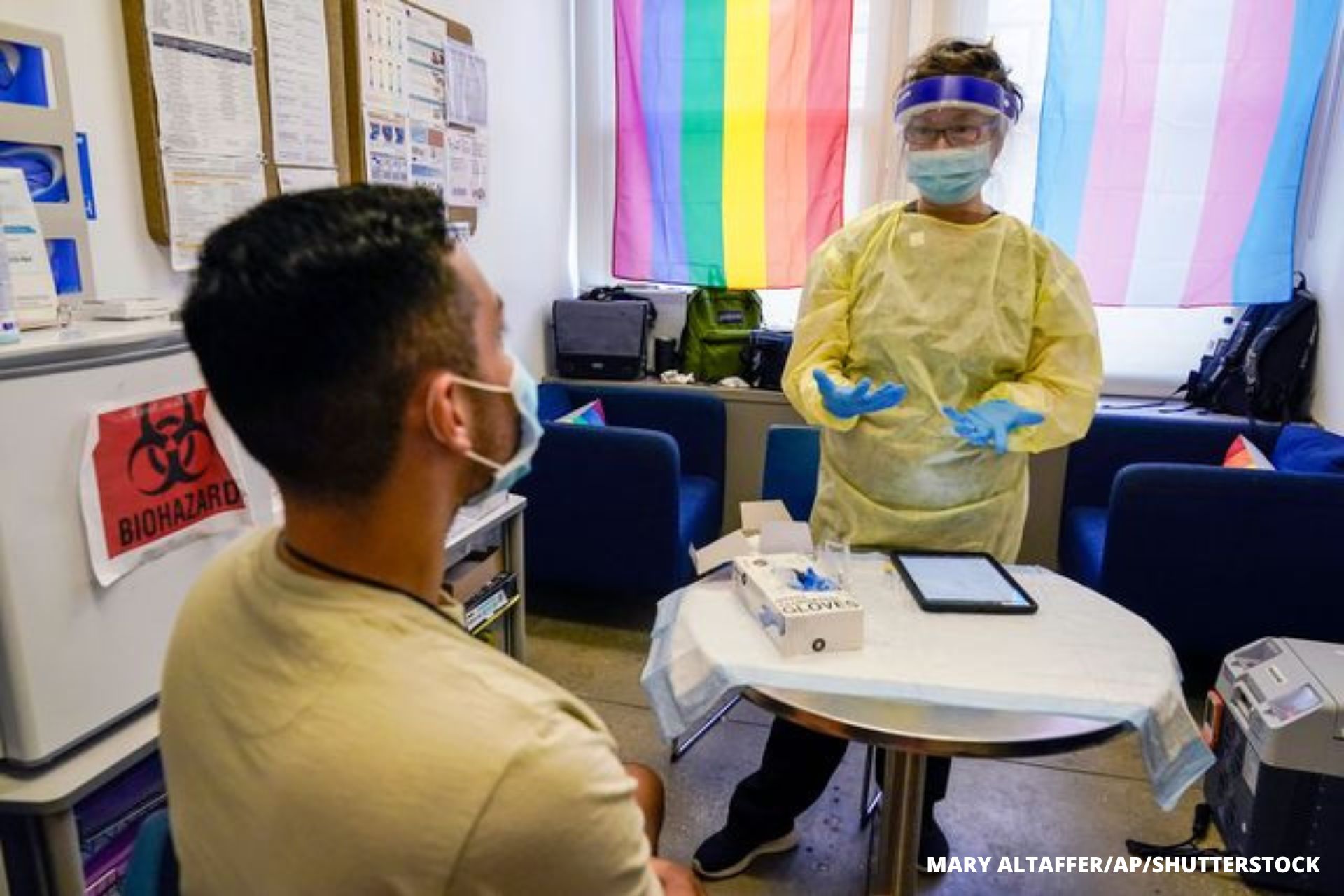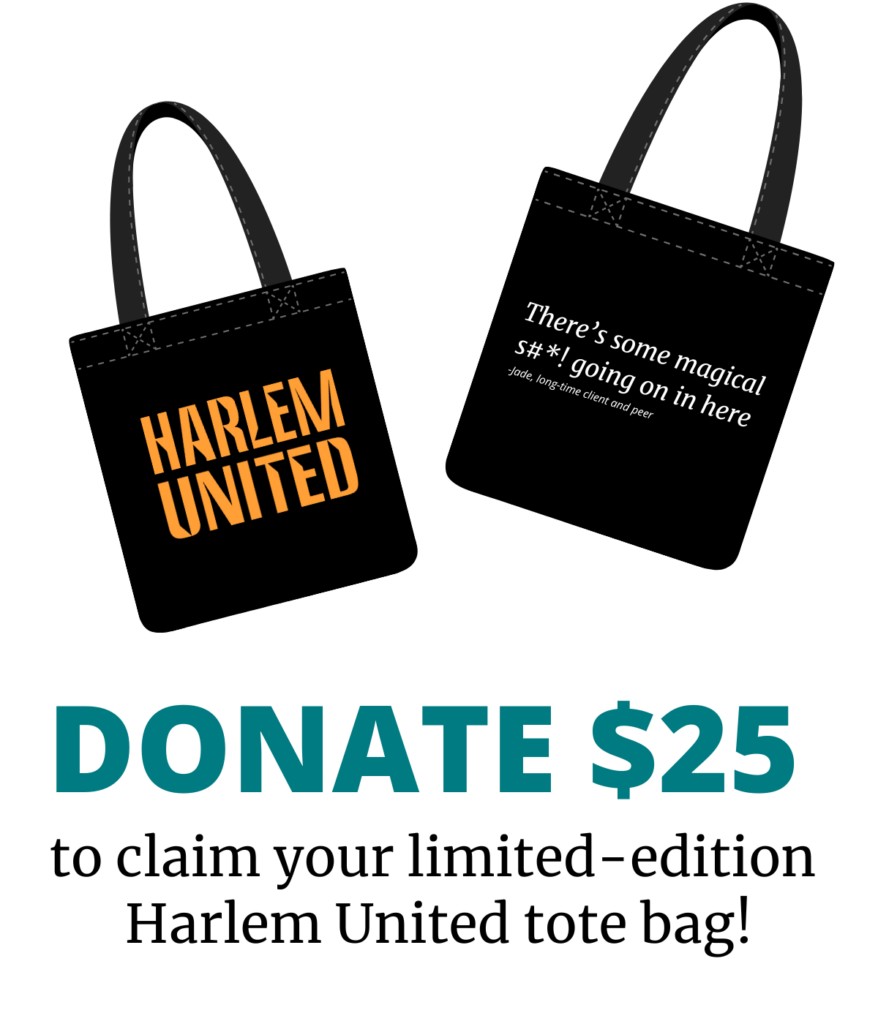By Caroline Lewis and Jaclyn Jeffrey-Wilensky
Gothamist
“[Health care] providers really need to spend time educating, answering questions, working through the mistrust issues, and trying to dispel all of the rumors and the misinformation that is out there”
– Jacqui Kilmer, Harlem United CEO
New York City is finally showing some progress toward quelling this summer’s alarming monkeypox outbreak — but the city is calling on community groups to close a gap in vaccines for Black and brown New Yorkers.
The number of new cases is starting to trend downward across the five boroughs each day, while the number of people vaccinated against the virus climbs toward 70,000 total, according to the latest municipal data.
But in recent days, city and state health officials have acknowledged that vaccination progress across demographic groups has been uneven, and that there needs to be a greater focus on equity when it comes to outreach and immunization. In particular, data shows the city is falling behind when it comes to immunizing Black New Yorkers who are eligible for the Jynneos monkeypox vaccine.
“These new data show our efforts are making a difference, but just as importantly, we must double down to ensure the distribution gap and equity are addressed,” New York City Health Commissioner Dr. Ashwin Vasan said at a City Council hearing on the monkeypox response on Wednesday.
New York City is enlisting community groups to help address the disparities. The city’s health department plans to award $5 million to community groups to produce targeted educational materials and conduct in-person outreach in bars and clubs, with preference going to organizations serving neighborhoods that were designated as part of the city’s Taskforce on Racial Inclusion and Equity after being hit hard by COVID-19.
But an Aug. 4 callout for program participants suggests that funding for these efforts may be slow to arrive. The city is requiring that applicants front the cost of initial outreach before they can be reimbursed through city funds, which could prevent some groups from participating in the program.
According to the city health department, the program is being funded this way because it is an “emergency purchase,” which is used when “an unforeseen danger creates an immediate and serious need for services that cannot be met through normal procurement methods.”
Vaccine disparity
Efforts to stem monkeypox spread have so far focused primarily on those most at risk for contracting the virus in the current outbreak – a group that includes men who have sex with men as well as trans and nonbinary New Yorkers. But there are disparities within that group and among who is getting vaccinated.
Monkeypox cases by race and ethnicity roughly match the city’s overall demographic breakdown. Being Black, white, or Hispanic doesn’t make a person more likely to catch the virus.
But the vaccination rates tell a different story.
The city’s health department estimates that Black New Yorkers make up 31% of the vaccine-eligible population. But they’ve gotten just 12% of the shots, according to the latest data shared by the agency.
White New Yorkers, meanwhile, have gotten vaccinated at a rate similar to their share of the eligible population. They make up 45% of at-risk individuals and 46% of those who have actually gotten vaccinated.
Vaccinated individuals are also disproportionately young, with 25- to 44-year-olds accounting for 57% of the at-risk population and almost 70% of the city’s vaccine recipients. But young people have also borne the brunt of monkeypox cases: more than three-quarters of confirmed infections are among people in this age group even though they only account for a third of the city’s overall population.
The data also suggests that Bronx and Staten Island residents are undervaccinated compared to their share of the at-risk population, although the health department cautions that these geographic numbers are less reliable. Most cases so far have been detected in Manhattan and Brooklyn residents, which could also be due to better availability of monkeypox testing in those places.
Changing tactics
Dr. Robert Fullilove, a professor of clinical sociomedical sciences at Columbia University’s Mailman School of Public Health, attributes the racial disparities to a lack of trust and communication between the health department and the Black community, exacerbated by stigma and the long history of medical neglect and abuse of Black patients. That makes it hard for public health authorities to communicate risk and the importance of vaccination, noted Fullilove, who has worked on public health crises since the 1980s.
“What’s happening with monkeypox is just yet another chapter of 150 years of medical mistrust,” he said.
Partnering with community groups, as the city government is doing, is a proven way to get people on board with public health strategies like testing and vaccination, according to Fullilove.
What’s happening with monkeypox is just yet another chapter of 150 years of medical mistrust.
Dr. Robert Fullilove, Columbia University’s Mailman School of Public Health
“If you have credible messengers and trusted institutions in a community that can carry the message, then we should do more to empower these groups,” he said. “That is the strategy that worked with HIV, and that’s what has to work now.”
While the health department works to correct these disparities, it is also navigating a change in how monkeypox vaccines are administered. The federal government is requiring a new technique that involves injecting a smaller volume of the vaccine between layers of skin. Known as intradermal injection, the procedure will help stretch the limited supply of the Jynneos vaccine, but it calls for special equipment and extra training for health care workers. It’s also not an option for people with a history of skin conditions like keloids — thick, raised scars that are more common among people of color.
At the City Council hearing Wednesday, Vasan, the city’s health commissioner, said patients in this group can get the vaccine the old-fashioned way.
But Fullilove worries that switching up methods could breed more vaccine hesitancy and erode people’s already-fragile trust in the health care system.
“Well, let’s be clear, it’s a mess,” he said of the transition. “It’s going to increase the level of resistance that we’re going to have in selling this to people.”
Funding targeted outreach
The health department released an emergency request for proposals from community groups and women- and minority-owned businesses with strong ties to the LGBTQ community on Aug. 4 and set the application deadline for Aug. 11.
But the request indicated that participants would have to first commence outreach activities at the city’s behest — before officially being contracted to do the work. “The contractor should expect a delay in payment as a result of this process,” the document said.
Jacqui Kilmer, CEO of nonprofit Harlem United, said she would like to get city funding to hire peers with backgrounds similar to those they’re trying to reach to do nightlife outreach. “The design of the program makes sense,” she said.
But her group has not applied to participate in the program because it doesn’t have the money on hand to launch the nightlife initiative. “I guess in some sense, I appreciate that the city was upfront about what the timeline was going to be,” Kilmer said.
She added that her organization will continue to do less costly outreach such as using social media to share information about monkeypox — which she said she now refers to as MPV to avoid potential stigma.
Jason Cianciotto, vice president of communications and policy for the Gay Men’s Health Crisis, said his group is applying for funding from the city and has the capacity to ramp up monkeypox outreach before it arrives. He said GMHC is considering partnering with an organization in the Bronx, where he said the city has expressed a need for more vaccine access.
“There are a number of opportunities,” he said, including working with the city to set up a mobile vaccine site at a community center in a high-need area as part of a broader boroughwide effort. Vasan said the mobile vaccination initiative the city recently launched will be a key part of its effort to promote equity.
“We are working closely with NYC Health + Hospitals and community partners to decide where they need to be on any given day at any given time,” Vasan said at the City Council hearing on Wednesday.
Cianciotto said his organization also has close ties with the community of LGBTQ New Yorkers who participate in the ballroom scene, which has been depicted in television shows such as “Pose.” He said GMHC hosted a latex ball in June where a city health department worker handed out information about monkeypox, and he hoped to do more targeted outreach like that.
But, he added, “the marketing materials need to speak to the communities they are trying to reach.”
GMHC, which first emerged in response to the HIV/AIDS epidemic, has already been working to help its clients — mostly people of color — who are eligible for the monkeypox vaccine to sign up for appointments.
But Cianciotto added that disparities in health outcomes can be hard to eliminate.
“Black people continue to bear a disproportionate burden of new infections [from HIV],” Cianciotto noted. “We know from the 40 years that we’ve been here that there is historic racism and mistreatment of Black people that has led to a very deep mistrust of medical support and services and government agencies.”
Asked why she thought Black New Yorkers are undervaccinated for monkeypox, Kilmer of Harlem United also pointed to a mistrust in the health system among some, which became more apparent during the COVID-19 pandemic.
“[Health care] providers really need to spend time educating, answering questions, working through the mistrust issues, and trying to dispel all of the rumors and the misinformation that is out there,” Kilmer said.
Some advocates criticized the initial rollout of the city’s monkeypox vaccine campaign because of how difficult it was for some to snag an appointment through the online portal, even if they tried to sign up right when new appointments came online.
“What it would take to ensure greater vaccine equity is a more intentional process rather than an open call process that requires that people are constantly refreshing browsers,” said Wendy Stark, executive director of Callen-Lorde Community Health Center, which operates clinics serving LGBTQ patients in Manhattan, Brooklyn, and the Bronx.
The city has set aside some of its vaccine appointments for community-based health care providers like Callen-Lorde to distribute among those they serve in a more targeted way. Stark said her organization has done an analysis of its patient population to determine who is most at risk for catching the virus and who is most at risk for a severe case if they get it, such as those with HIV.
“One of the nurses that was making the calls reported that they’ve had a number of patients crying in relief that someone reached out to them to get them access to the vaccine because they didn’t know how they were going to get it,” Stark said.
Stark said that community-based clinics like hers also need more funding to do this work.
At the City Council hearing on Wednesday, Vasan said the scarcity of the Jynneos vaccine so far has made equitable distribution more challenging.
“It’s been extraordinarily difficult to mount an effective and equitable response to MPV in an environment of limited access to vaccines, testing and treatment,” he said.
Originally published in Gothamist on August 26, 2022.

